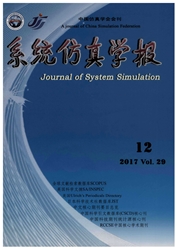

 中文摘要:
中文摘要:
作为射击精度评估的常用指标,无论是圆概率偏差,还是命中概率都没有涉及面目标的功能结构的重要度,而命中重要程度不同的区域,其射击效能是不同的。针对末修子母弹打击面目标时射击效能的评价问题,在通过数值模拟法产生末修子母弹的落点散布,以及利用毁伤树分析方法对面目标进行功能区域划分的基础上,利用Monte—Carlo仿真方法计算了子母弹对各功能区域的命中概率只,并定义了基于区域结构及重要度的射击命中度和毁伤概率,从而综合评估了整体的射击效能。最后通过仿真算例说明了该方法的合理性,并利用均匀设计法定量分析了末修子母弹的性能参数对射击效能的影响。
 英文摘要:
英文摘要:
The importance of the function structure of area target is ignored by Circular Error Probability (CEP) and hit probability, which are the usual indexes for evaluating the fire precision. However, hitting the area with different importance means the difference of fire effectiveness. The fire effectiveness assessment for terminal correction cluster warhead attacking area target was focused on, based on simulating the impact point of the sub-munitions, and dividing the function area of the target by the method of damage tree, the hit probability of sub-munitions to each sub-area, which is Pi, was computed by Monte-Carlo. After that, the hit degree and the damage probability based on the importance of sub-area were defined to assess thefire effectiveness. An example shows the method is reasonable, and by uniform design, the effect of some of the technical parameters of cluster warhead to fire effectiveness is analyzed.
 同期刊论文项目
同期刊论文项目
 同项目期刊论文
同项目期刊论文
 期刊信息
期刊信息
